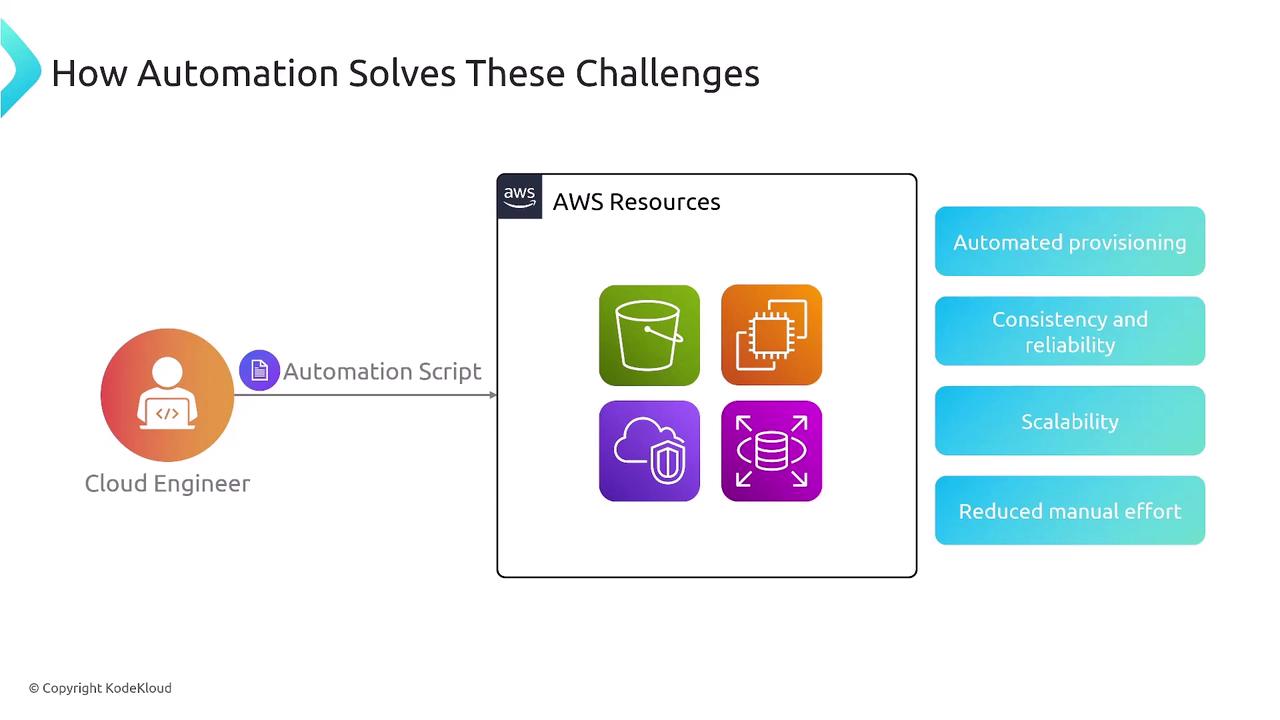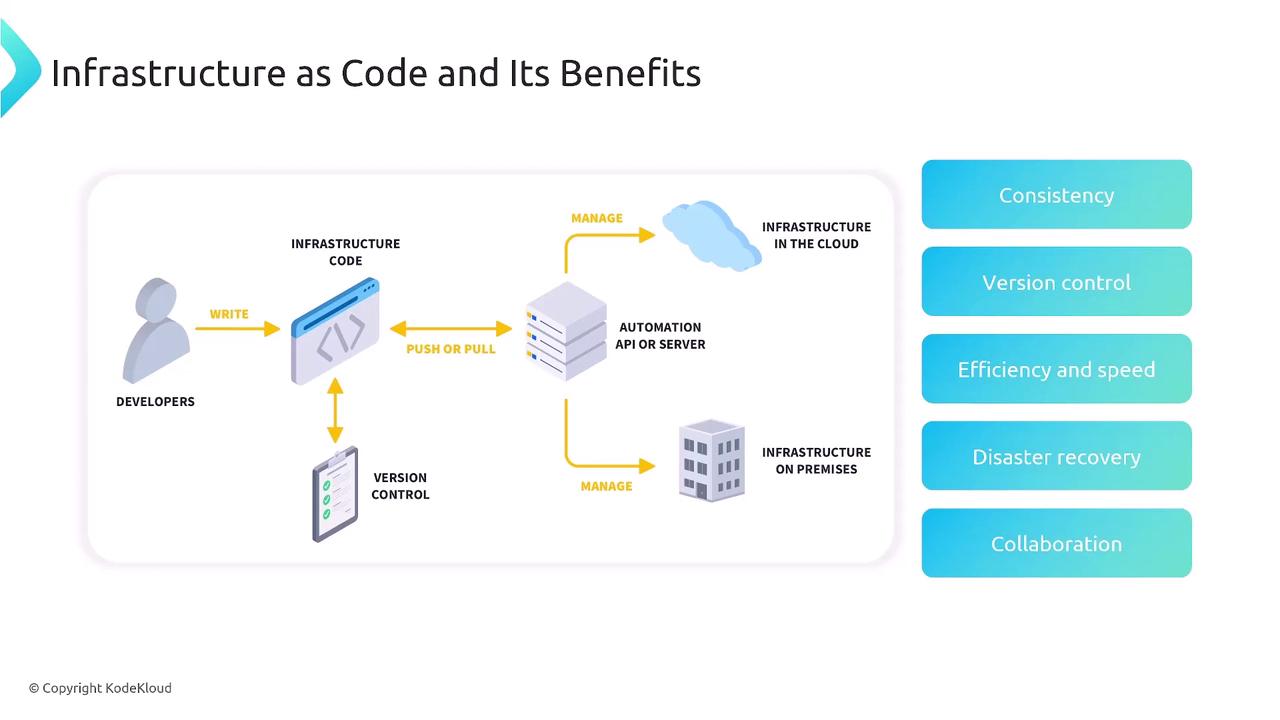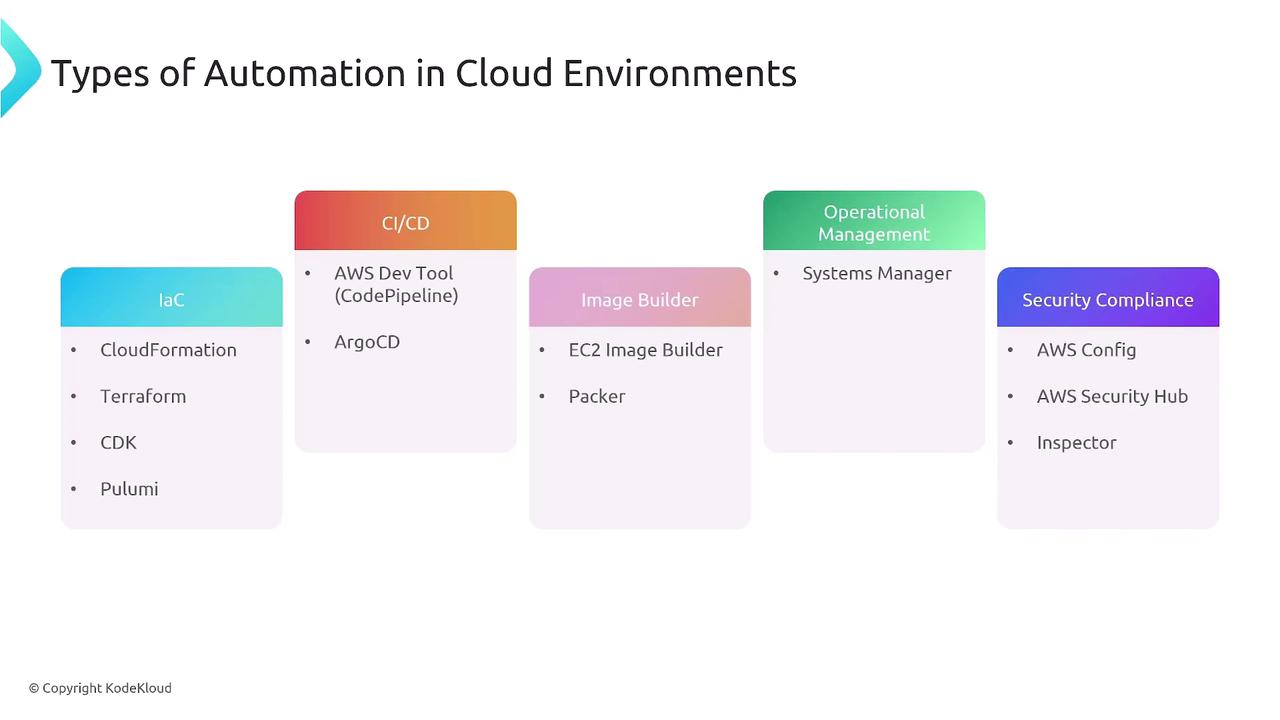AWS Certified SysOps Administrator - Associate
Domain 3 Deployment Provisioning and Automation
Importance of Automation and IaC in Service Provisioning
In today's fast-paced cloud environments, automation and Infrastructure as Code (IaC) are crucial for overcoming the challenges of manual provisioning. This lesson delves into how these practices enhance reliability, consistency, and scalability while minimizing human errors and operational burdens.
Manual Provisioning vs. Automation
Before adopting automation, service provisioning relied heavily on manual processes—often called "click ops." This involved navigating through cloud interfaces (like AWS) to set up resources, which was not only time-consuming but also prone to errors. The lack of repeatability and tracking in these manual processes can lead to configuration mistakes, scaling difficulties, and even outages.
Note
Automation leverages scripts and tools such as Bash, CloudFormation, Terraform, and Pulumi to ensure that infrastructure is provisioned consistently and reliably.

Automation not only reduces manual effort by reusing proven processes but also inherently supports scalability. It establishes a systematic, repeatable approach that minimizes the frustration and risks associated with manual provisioning.
Infrastructure as Code (IaC)
Infrastructure as Code takes automation further by introducing version control into provisioning templates. Whether using Bash scripts, Terraform files, or other IaC tools, version control lets you track and manage changes over time. This is invaluable for troubleshooting or rolling back configurations since every change is documented.
IaC enhances consistency, efficiency, and speed by enabling rapid and repeatable infrastructure setups. It also plays a significant role in disaster recovery by allowing the entire infrastructure to be recreated reliably from stored templates.

This approach simplifies deployments and boosts collaboration. Engineers can build on existing IaC templates, leveraging best practices and proven designs for their projects.
Types of Automation in Cloud Environments
Automation in the cloud covers various areas, each designed to streamline operations and enhance productivity. Below is an overview of the main categories:
| Automation Type | Tools and Technologies | Description |
|---|---|---|
| Infrastructure as Code | Terraform, CloudFormation, AWS CDK | Define and provision infrastructure through version-controlled code. |
| CI/CD Automation | Jenkins, GitLab | Automate the end-to-end software delivery process. |
| Image Building | Packer, AWS EC2 Image Builder | Create immutable, bootable virtual machine images. |
| Operational Management | Microsoft Systems Operation Manager, AWS Systems Manager, Ansible, Chef, Puppet | Manage configurations and support ongoing operations. |
| Security Compliance | AWS Config, AWS Security Hub, AWS Inspector | Automate security and compliance checks to ensure a robust environment. |

AWS emphasizes automation as a means to reduce operational overhead, allowing teams to focus on innovation rather than routine tasks. The array of automation tools and best practices provided by AWS and third-party vendors simplifies infrastructure management, improves reliability, and enhances security across deployments.
Summary
Incorporating automation and Infrastructure as Code into your provisioning processes is key to achieving consistent deployments, robust disaster recovery, and efficient scaling—all while reducing manual risks and errors.
Thank you for reading this lesson. We look forward to exploring more topics in our next article.
Watch Video
Watch video content